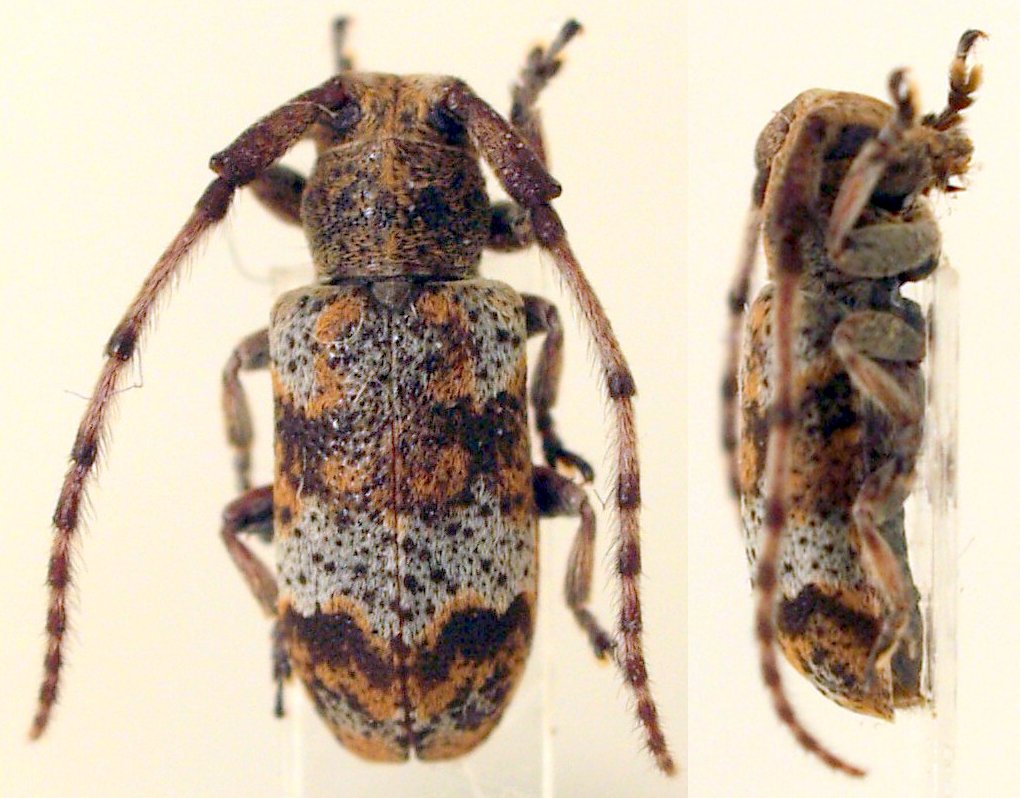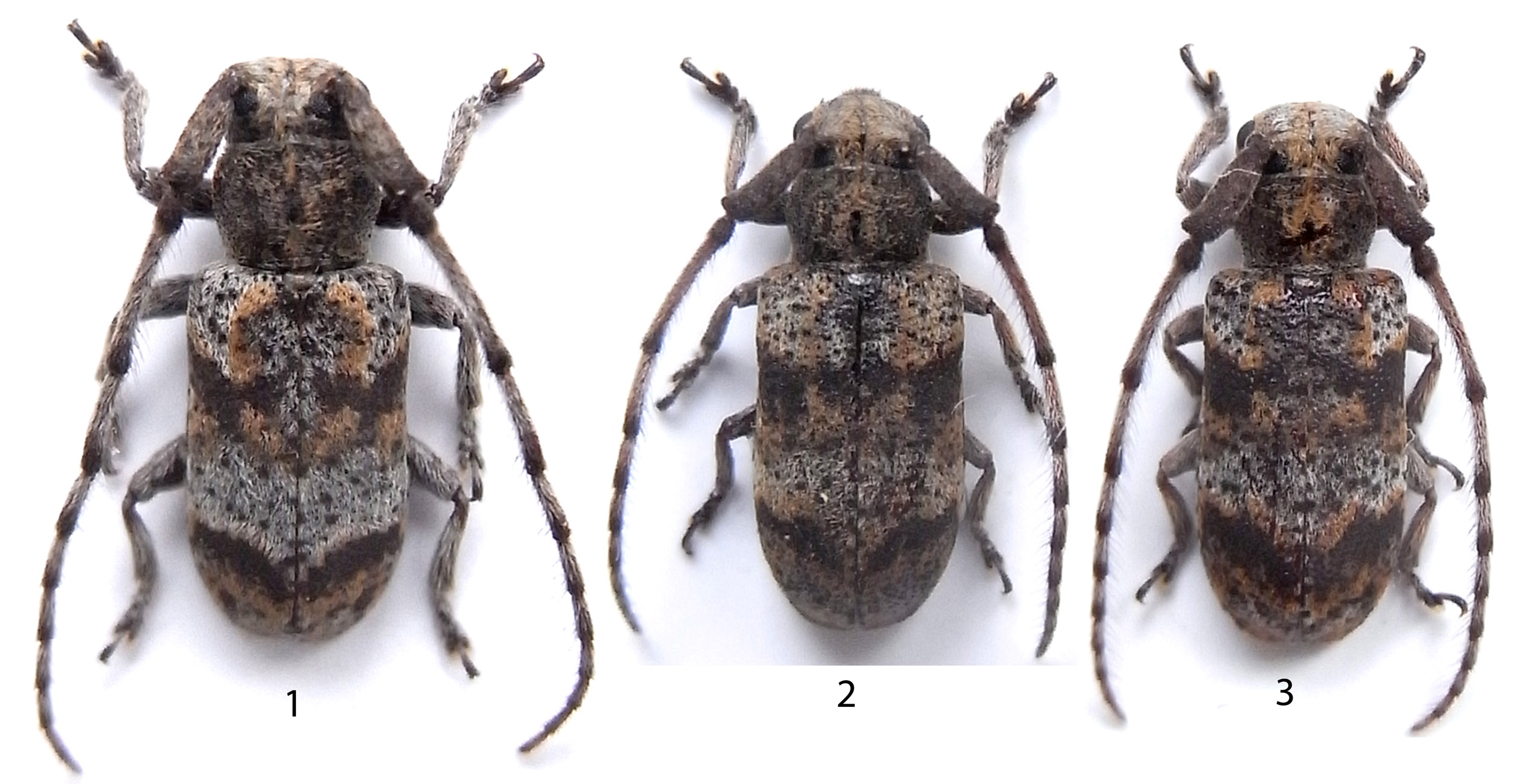| T O P I C R E V I E W |
| Gerard |
Posted - 29/04/2015 : 18:32:15

146.94 KB
Laos, Luang Prabang, 7 mm
Pour celle-ci je verrais bien Falsomesosella theresae Pic, 1945

310.78 KB |
| 7 L A T E S T R E P L I E S (Newest First) |
| Xaurus |
Posted - 25/11/2017 : 13:38:42
Yes, Breuning (1939) synonymized Mesosa minor Pic, 1926 with Falsomesosella minor Pic, 1925. Both description are completely the same concerning at least 2 Syntypes (because the measurement is 7-8 mm), so now it's necessary to designate a Lectotype for F. minor.
Of course the spm pictured by G. Nearns, the other Syntype, according the picture, belongs to another species, but also called F. minor = Homonym.
Later Pic, 1944 described F. breuningi for the same spm. This is an objective synonym, so we can use it for the recent name of this species: F. breuningi Pic, 1944.
I hope this is the right situation ! |
| Xavier |
Posted - 25/11/2017 : 09:38:42

409.02 KB
1. Laos (LuangPrabng)
2. Thailande (Phrae)
3. Thailande (Phrae)
Here 3 other Falsomesosella sp..
|
| Xavier |
Posted - 25/11/2017 : 09:09:59
Pic has described Falsomesosella minor Pic, 1925 , then Mesosa minor Pic, 1926. Breuning (1939) synonymized M. minor :

42.14 KB |
| Xaurus |
Posted - 25/11/2017 : 01:19:54
yes Xavier you are right, it should be F. breuningi, only the 4th anntenal segment is shorter as in the type spm maybe a sexual character, but I'm not really sure what is the right name now, I need a bit time for study this problem more in detail. Who synonymized Mesosa minor Pic, 1926 with Falsomesosella minor Pic, 1925 ? |
| Xavier |
Posted - 24/11/2017 : 09:46:45
Suite ŕ la remarque d'Andreas ici, cette espčce pourrait ętre Falsomesosella breuningi Pic, 1944. |
| Xavier |
Posted - 29/10/2017 : 19:00:59
En étudiant plus précisément les photos de types,je pense qu'il s'agit finalement de Falsomesosella minor Pic, 1925, comme celles que nous avons prises ensemble en Thailande. |
| Xavier |
Posted - 29/04/2015 : 20:49:04
Je la trouve plus proche de Falsomesosella ochreomarmorata Breuning, 1968 qui a les antennes bicolores (ce n'est pas le cas de F.theresae Pic) |
|
|


